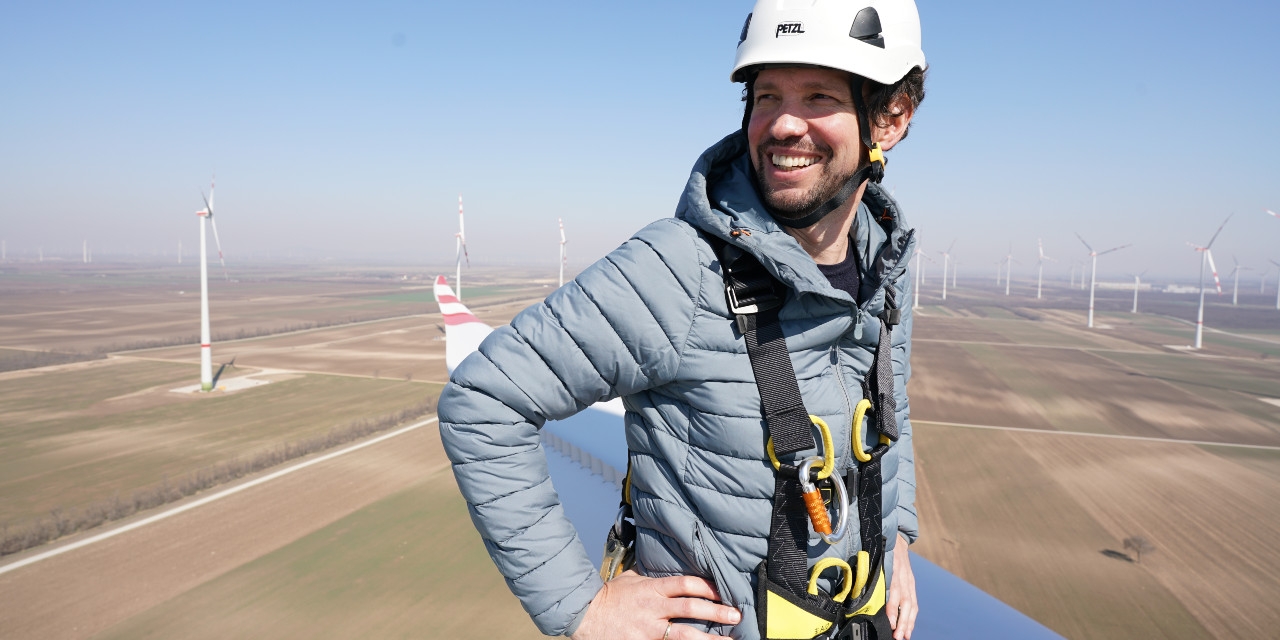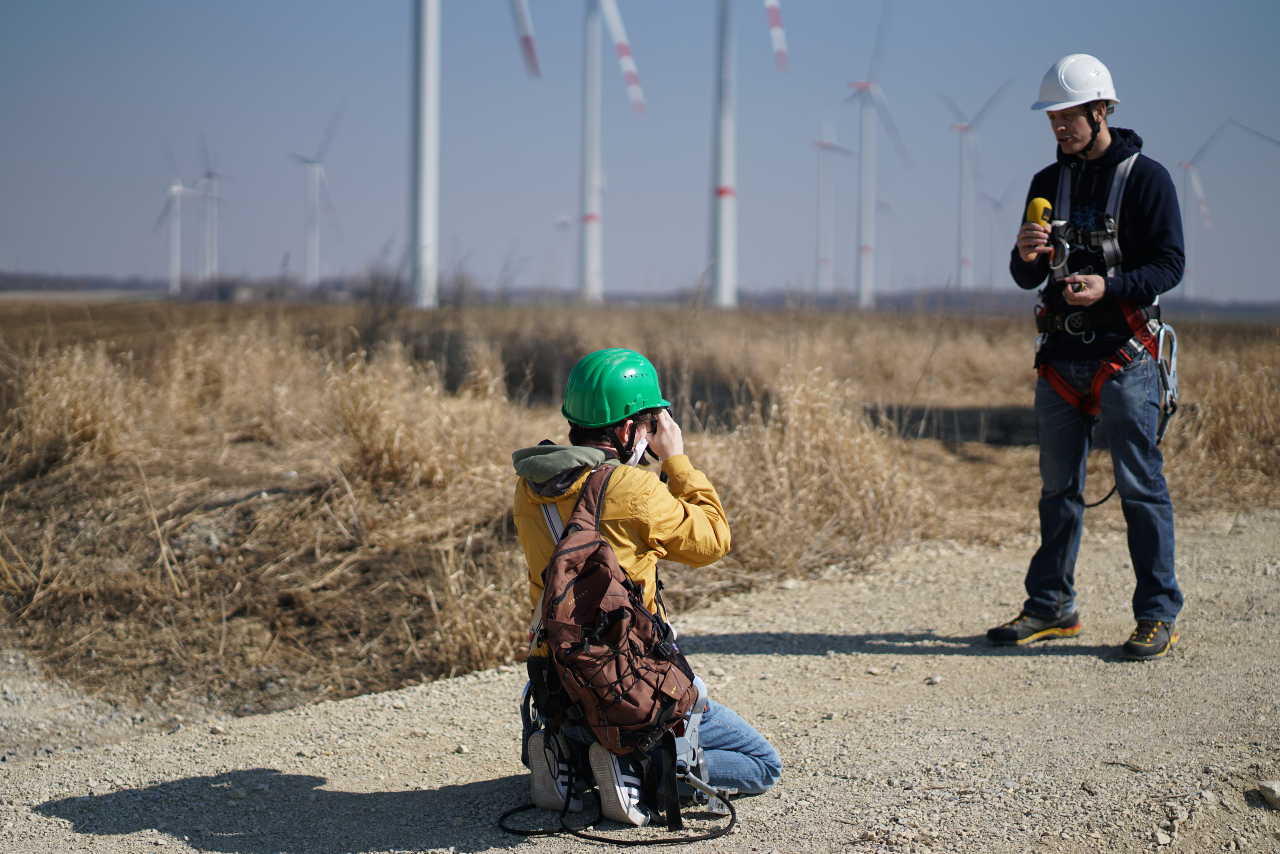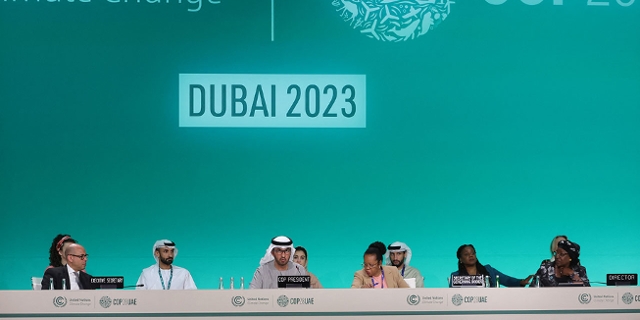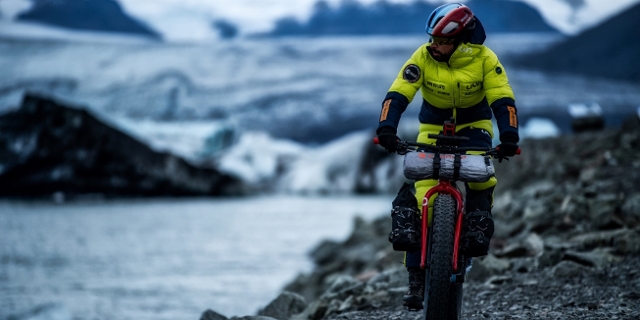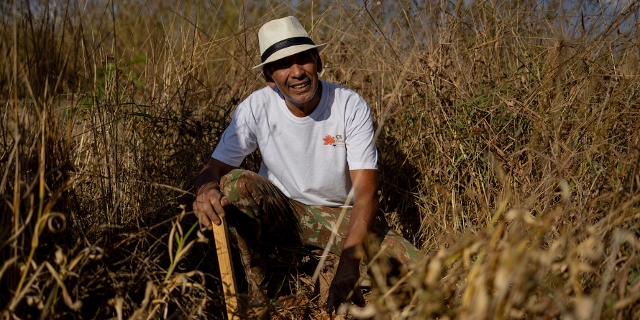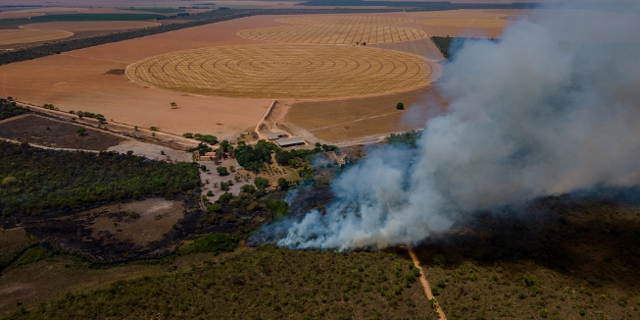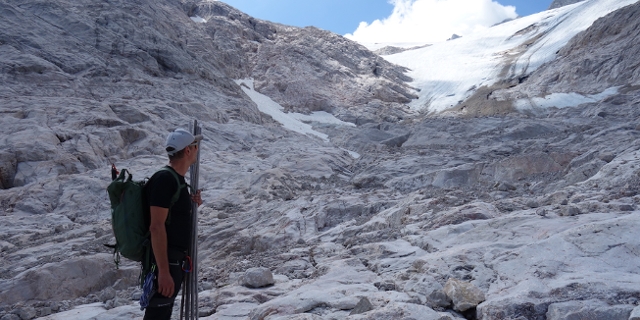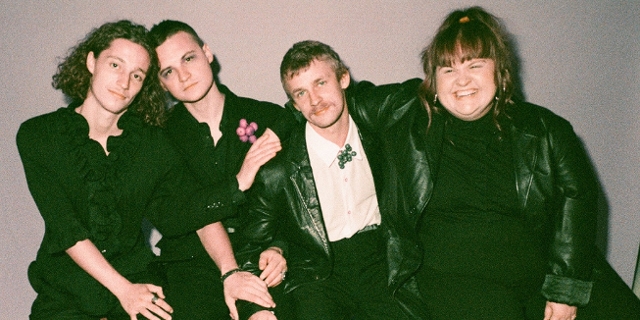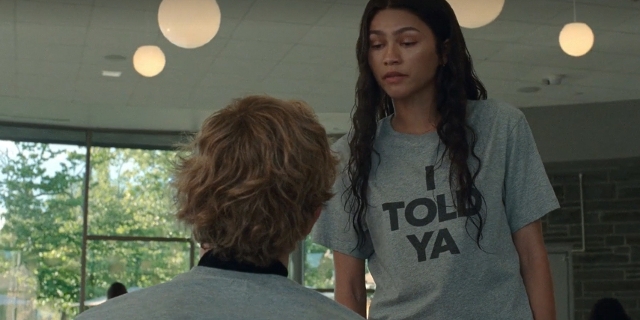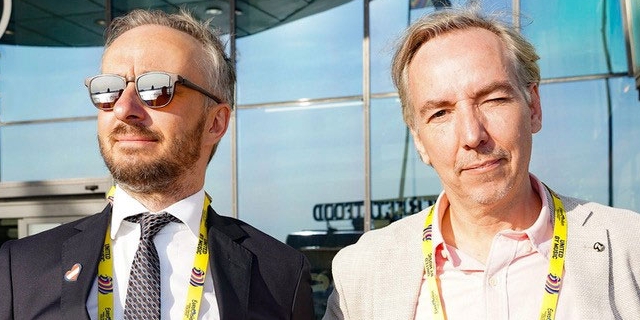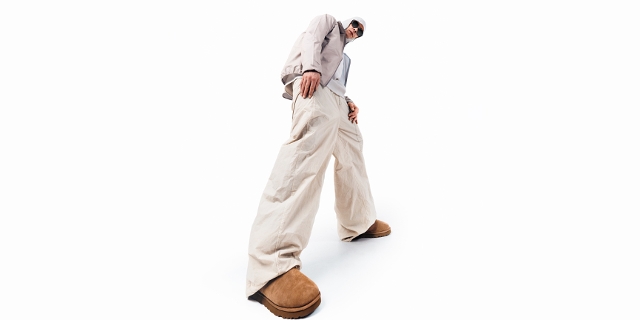Blowing Away The Climate Crisis
I’m riding up a narrow lift-shaft that leads to the gondola, or machine room, of a wind turbine in Gols in Burgenland. It’s 120 metres to the top, and the trip takes over three minutes. Near the top I begin to feel a little claustrophobic; although, on reflection, I decide I shouldn’t complain. All my friends had been sure I’d have to climb all the way up. A lift is a luxury.
But why am I here?
Well, the urgency of this week’s Intergovernmental Panel on Climate Change (IPCC) report has given me the spooks with its last chance saloon message. We have just months left to properly react to the climate crisis.
Also it’s breaking my heart that we are sending millions of euros in fossil fuel bills to Russia to fund a murderous war. I want to know how quickly we can expand Austria’s renewable network.
100% Renewables by 2030? How?
Austria is good at making promises. It has to produce all its energy from renewable sources by the year 2030 as part of its pledge to go climate neutral by the year 2040.
But how will we get there?
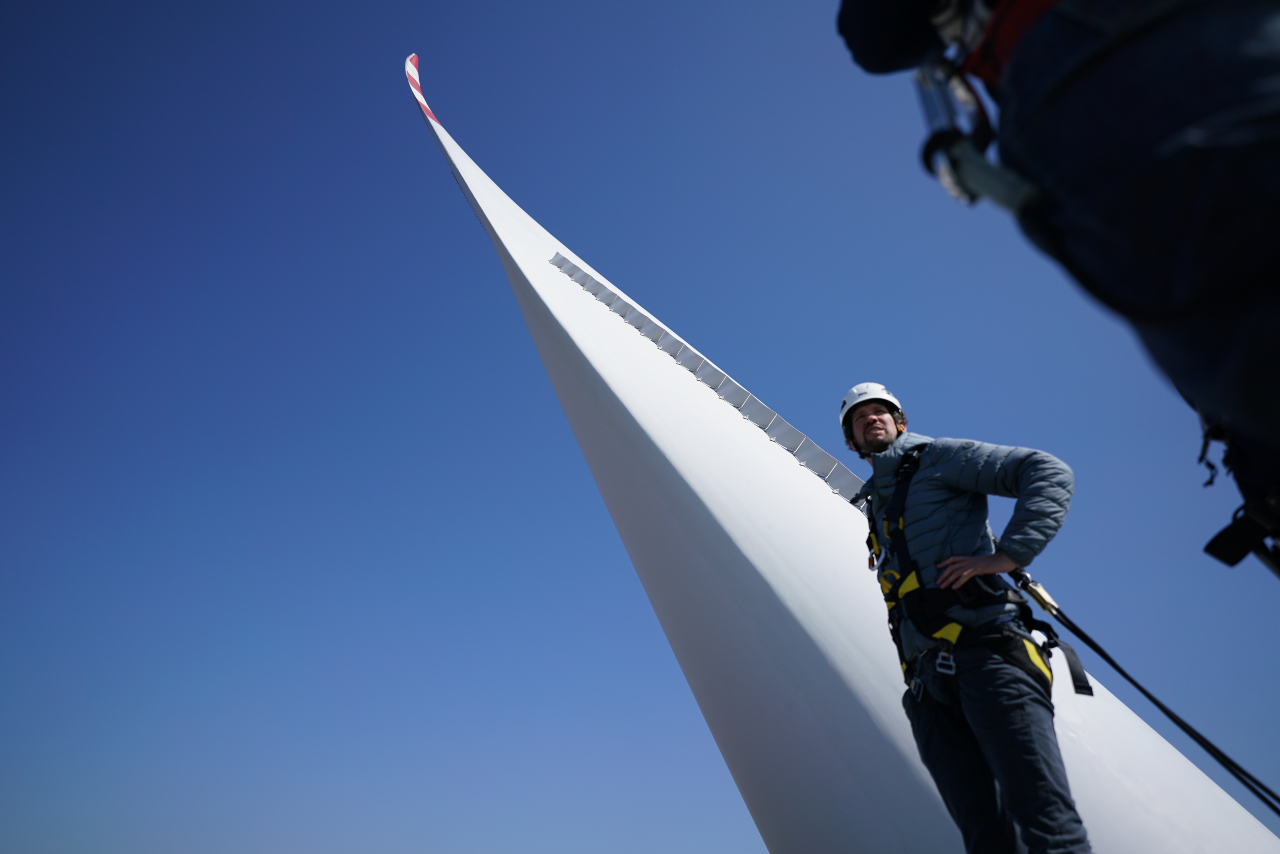
Philipp Zeithammer
This is all vitally important because we are teetering on the edge of a frightening cliff. The IPCC report that I mentioned says carbon emissions need to peak within three years, and fall rapidly after that; or we face catastrophic climate change.
Expanding clean renewable energy produced by the likes of this turbine is essential to that goal.
Averting Catastrophe: „Still Possible, But Difficult“
The dire warnings on the climate feel very personal to me. My little boy is 4 years old. Week after week I hear the world’s top scientists telling me that, even by conservative estimations, he will grow up in a dystopian world unless our politicians remove their heads from their nether regions. But they don’t. They are even building more motorways. Can we really believe we can avoid catastrophe in time?
“It’s still possible” to avoid this scary scenario, IIASA scientist Edward Bryers told me this week, “but it is going to be difficult.”
This means ending self-congratulatory incremental steps starts renewables and starting real change. And for that we need more space for wind.
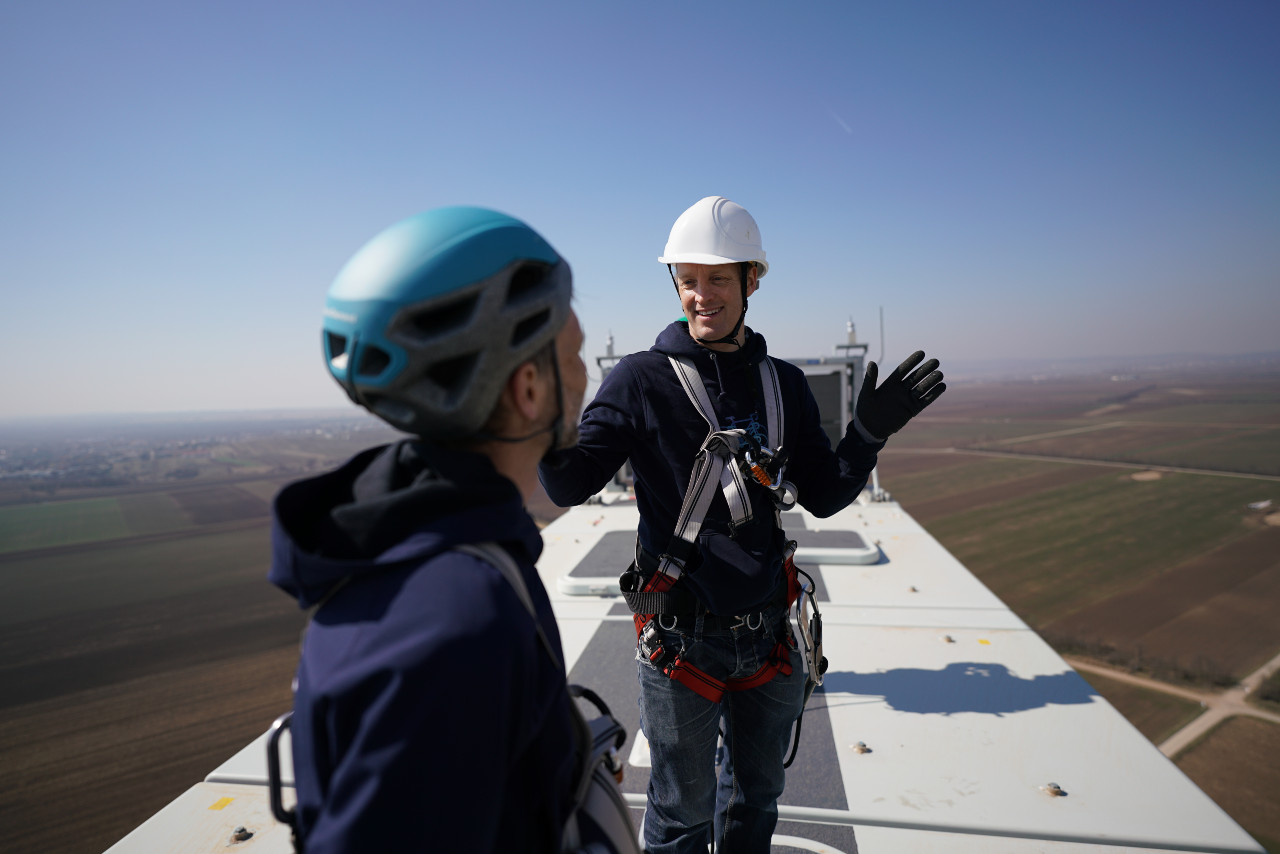
Philipp Zeithammer
“Give Us More Space And We’ll Fix The Crisis”
The duo that are showing me the wind turbine today insists the wind energy sector already has the materials, know-how and money to quickly expand wind power in Austria and make the country healthier and more independent.
The only thing they say is lacking is political will.
For example, there are no utility scale wind turbines at all in Salzburg, Tyrol or Vorarlberg, although visitors to those provinces might have noticed that there is plenty of wind there.
All Of Austria’s Electricity Needs Could Be Covered by 2% of Austria’s land surface.
“We have very high potential. In Austria, we could generate 83 terawatt-hours of electricity a year on just 2 percent of the country,” says Martin Fliegenschnee-Jaksch of the Austrian Wind Energy Association.
That’s an astounding figure. It’s more than the current 74 terawatts of electricity a year that Austria currently consumes.
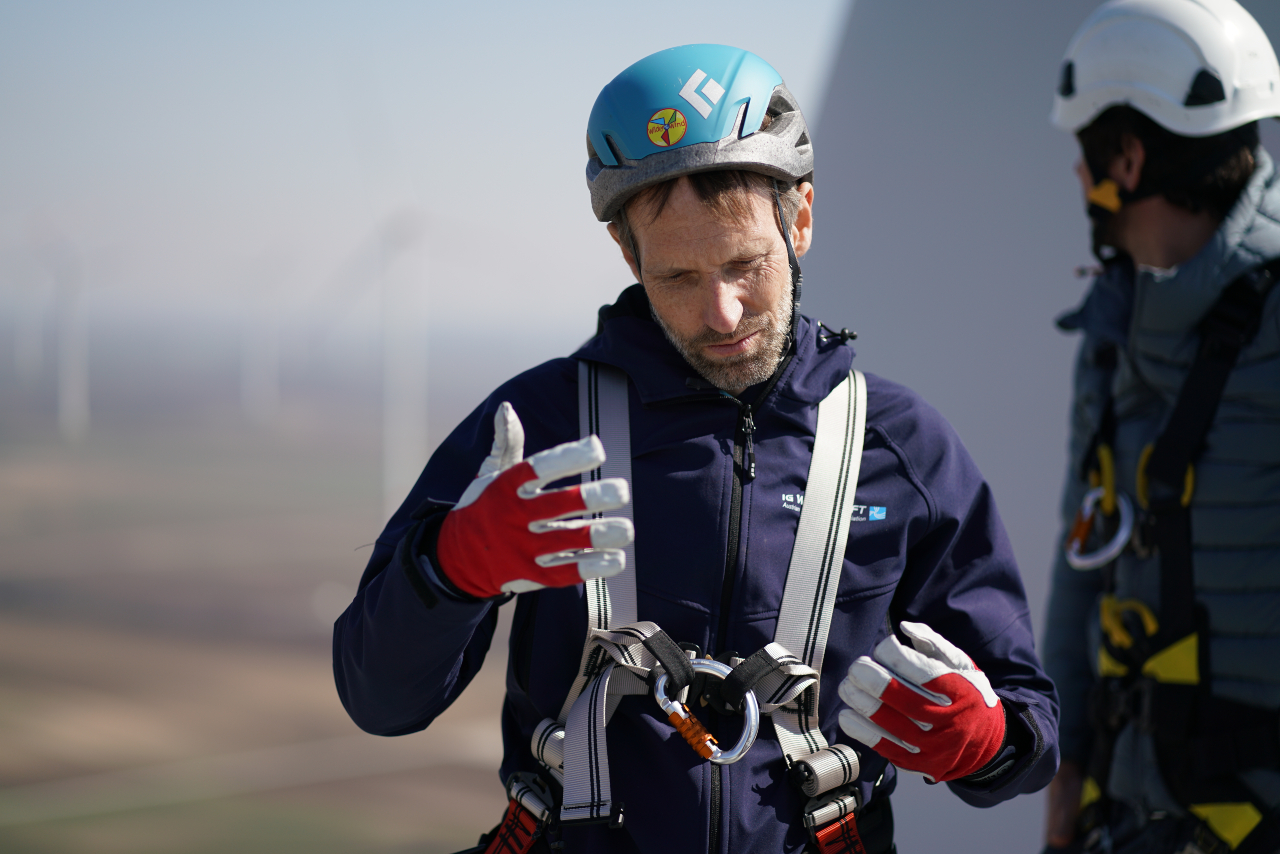
Philipp Zeithammer
Martin Fliegenschnee-Jaksch
Bigger and Better
I’d been up a wind turbine once before today’s visit, around 15 years ago, but it wasn’t nearly as tall. That’s because in terms of wind power, bigger really is better. At a higher altitude the wind is more constant. Now that the technology allows engineers to build higher for less money, wind turbines are reaching ever higher into the sky.
That explains the optimism about renewables. They are getting more efficient than even enthusiasts from the 1990s dared dream.
"When the industry started 30 years ago, one turbine would generate the electricity for around 500 households,” explains Lukas Püspök, who runs this family-owned wind farm in Burgenland. “The turbine we’re standing on now can produce at least ten times as much.”
So why aren’t we doing it?
So turbines are getting better and they are getting cheaper, and we need them to avoid climate Armageddon. So why aren’t we seeing wind turbines pop up everywhere?
When we arrive on the roof of the gondola, looking out over Lake Neusiedl, Lukas explains the crux of the problem: it’s bureaucracy.
The main obstacle is getting permission to erect new turbines. “We need way more turbines in Austria. To do this, we’re not asking for money, or subsidies. We just need land. Everything else is pretty much ready. So we need politics basically to show us the way and to increase the pace.”
It is hard to overstate the importance of this. Jim Skea, the co-chair of the working group behind this week’s IPCC report put it bluntly: “It’s now or never, if we want to limit global warming to 1.5 Celsius. Without immediate and deep emissions reductions across all sectors, it will be impossible.”
„Now or Never“
In other words, we can’t afford to delay. The window of opportunity to save the planet is rapidly closing. And yet the history of wind energy in Austria is a long history of delay says Martin Fliegenschnee-Jaksch.
In some recent years, despite evidence of the climate crisis and our dangerous dependence on fossil fuel imports, Austria has actually decommissioned more outdated turbines that it has erected new ones.
What is going wrong?
“We need the space to erect the wind turbines,” says Martin. “We need enough staff and resources from the approval authorities. Approvals must go through quickly and not be left lying around for months because there are not enough staff to process them."
And, he adds, red-tape must be reduced: “We now have the situation in Lower Austria, for example, where the suitability of the landscape has to be evaluated three times. Once has to be enough. It has to go faster.”
Democratic Consensus
Of course this can’t be a process that goes above the local population’s head. But Lukas says the process is already very democratic: “You start the project by asking the landowners,” he explains. “Then, when they agree, you go to the community and then everybody in the community agrees. Then you go to the local government and so it goes on. So once there is a project that has been approved, actually, you’ve asked everyone in all the stages.”
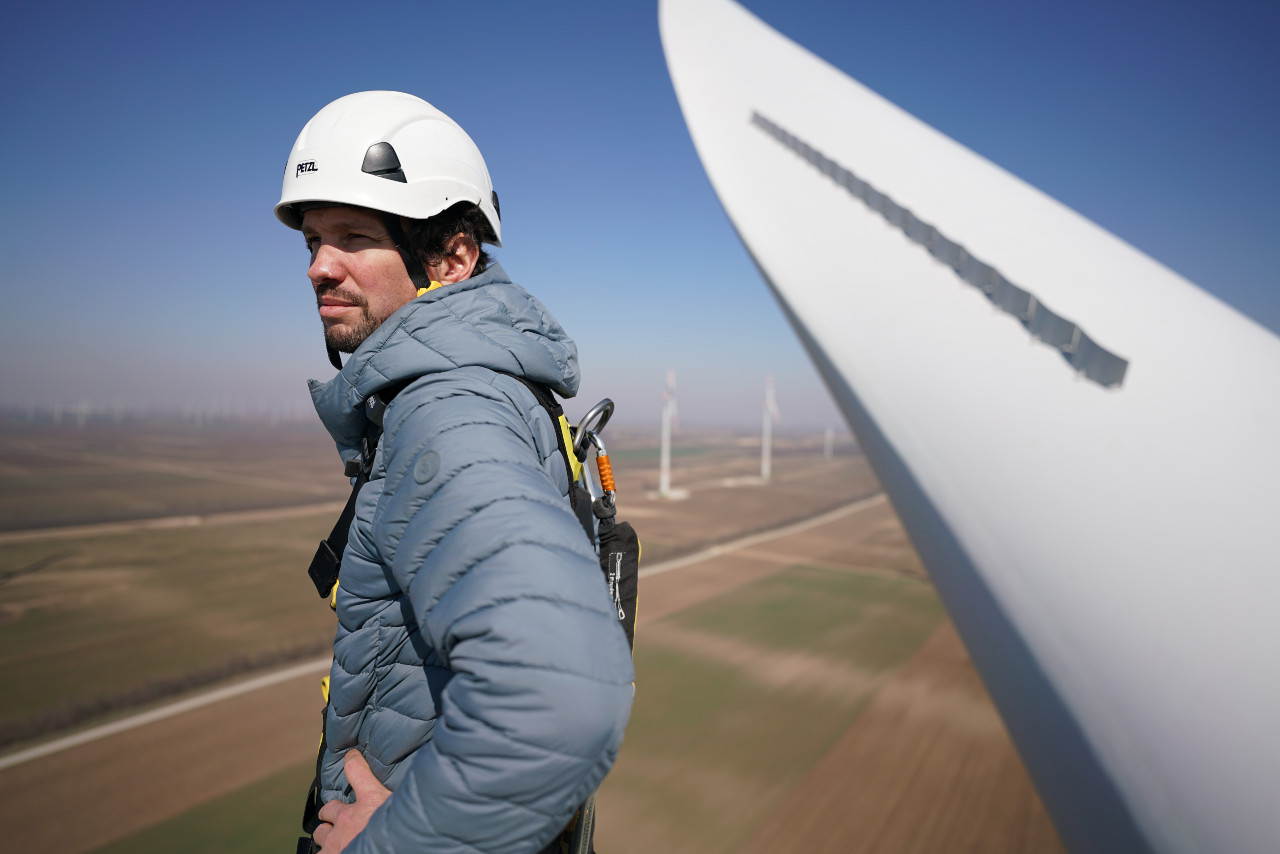
Philipp Zeithammer
Lukas Püspök
A Generation Has Grown Up With Wind Energy
He says that only around 6 percent of the proposed projects are cancelled because of objections of the local population. In other words in 19 out of 20 cases a wind turbine project gets the blessing of the community.
But he adds that it does depend on geography and generation. The first wind turbine was erected in Austria in 1994 and so a whole generation has grown up with them being part of the landscape. But striking out in new areas is more problematic: Perhaps that explains why there are no turbines at all in Salzburg, Tyrol or Vorarlberg?
What Happens When The Wind Doesn’t Blow?
Wind, say its advocates, is particularly relevant to the current energy price crisis because the wind blows strongest in Austria during the winter months.
That’s when currently we are using a lot of important gas. Each new turbine would reduce those imports.
It has to be said the wind is very weak today, which brings us to a common concern about renewables. It’s claimed that it’s dangerous to depend on solar and wind because of the vagaries of the weather.
Tag-Team Energy
However Lukas points out that a shared grid means that when it is not windy in Burgenland, then it still might be windy that day in Italy or Germany.
He also says that often on windless days the sun burns down strongly and he is working on a project to have photovoltaic plants at the feed of turbines so they work like a tag-team.
No Long-Term Waste
Advocates of nuclear say it is independent of the weather. But Lukas points out that if future generations don’t like his wind turbines, they can be taken down in a few days and would leave barely a trace.
Nuclear waste, by contrast, is a problem that will remain for thousands of years.
Blood Fuel
It took the nightmare situation in Ukraine for us to really confront our dependence of fossil fuel imports from autocracies. There’s a distasteful irony in the bullying of Russia sending western leaders grovelling to Saudi Arabia and Qatar.
We proudly boast of cracking down on the trade in “blood diamonds” which fuel conflict, but sending millions of euros to pay for “blood fuel” has rarely been an issue.
Why did it take us so long to call for an independent sustainable energy supply?
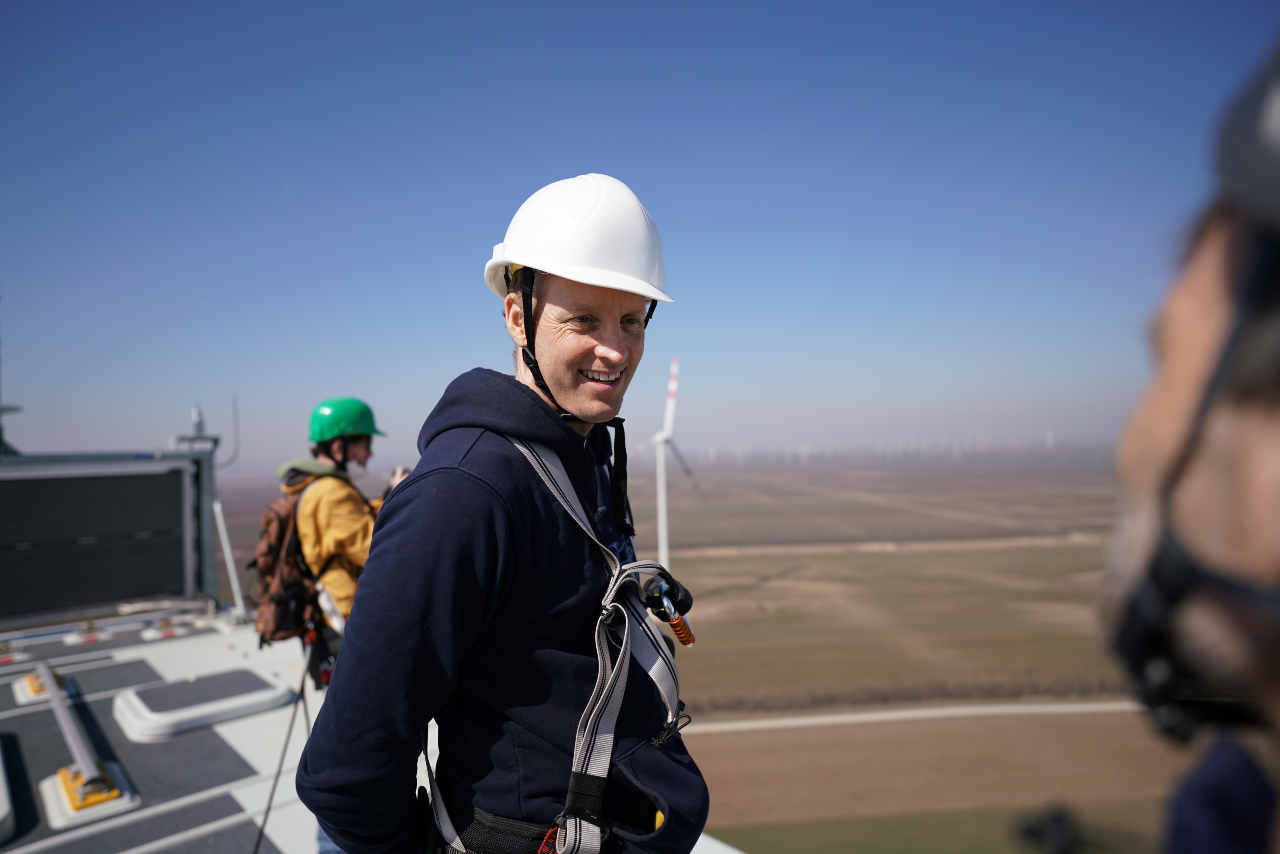
Philipp Zeithammer
“Give Us A Chance”
“Of course it would have been best to have changed things a long time ago but now we see the urgency of the climate crisis, with temperatures over 30 degrees above average in the Arctic and the Antarctic recently,” says Lukas. “Now people are realizing that is not such a good idea to be dependent on energy from very unstable regimes. So it is really important to switch to renewable energy now.”
Publiziert am 08.04.2022







